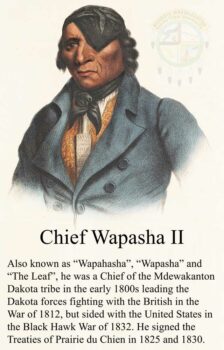Here are 3 books on amazon that would be a great gifts for only $35.00 for all 3.
This item: Stolen Culture, Traditions, and Heritage.: Good Thunder Woman – Wakiya Waste Win in Dakota. $15.99$15.99 16 pts + Mendota Dakota: Erasure and Recognition
This item: Stolen Culture, Traditions, and Heritage.: Good Thunder Woman – Wakiya Waste Win in Dakota. $15.99$15.99 16 pts + Mendota Dakota: Erasure and Recognition
On our website we have pictures. Lets make sure your family is in that group of pictures. Your Tribal Council!
Methodist Bishop Commits to Returning Sacred Red Rock to the Dakota People March 31, 2017 healingmn NewsBishop Bruce Ough, Doctrine of Discovery, Eyah Shaw, Minnesota
Everything is the same as before. Look for updates soon. Sharon
Here’s an interesting pamphlet with history of the Leclaire, Bellecourt, Felix and Anderson family.
To many cousins to mention.

Holiday Party at the DuPuis House at 1357 Sibley Memorial Hwy, Mendota, MN 55150. To all families in need of help this holiday season. Mendota
Excerpts the a Hasting MN Gazette MHS 1-3-1885 – Dec 31 1887 Albert LeClaire is Grandfather to Lillian Anderson, Beverly Scott, Morris Brown, Robert Brown,
I’m so proud of my ancestors back to Little Crow Cetanwakanmani and beyond. Related to the Wabasha chiefs as well. If anyone can let me
PLEDGE FORM
http://mendotadakota.com/mn/wp-content/uploads/2019/02/New-Growth-from-Old-Roots.pdf
I found this letter to Bob Brown our tribal Chair back in 1998 a letter of support.
These fabulous guys will have the drum at our 30th anniversary. Come and enjoy them. Love Sharon Invitation Drum Singing practiceToPDF (1) (1) You’re ALL
What an honor for Sean Monahan, my son is driving the MNDOT truck he is leading the walk. Sean has worked for MNDOT for almost

MORTON, Minn. – Gripping a cane tightly, Ernest Wabasha slowly reached to touch a pair of heavy iron shackles hanging from his mantel – the
At my grandson graduation I ran into Tara. She was setting behind me. I heard auntie Sharon and turned around there was Tara. So glad
Berkeley will buy Ohlone shellmound site, return it to Indigenous land trust
Illinois home-to-federally-recognized-tribal-nation-following-historic-decision – following-historic-decision-by-u-s-department-of-the-interior. Let pray Mendota is next!!
This just came up last week. That an office came up , so we took it the suite is 120, first door on the right.
Pidamayaye for coming to our Wacipi. PLEASE NOTE: The flyer is not complete, we will be adding more details to it shortly. Can not wait
Site design www.CustomGenius.com